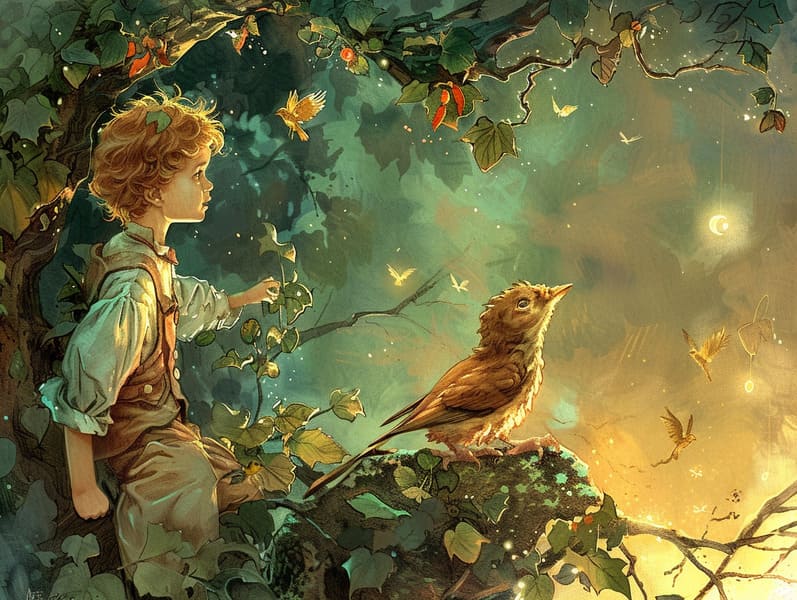The Creation of Online Fairy Tales and the Invariable Grandeur.
The Creation of Online Fairy Tales and the Invariable Grandeur.
Blog Article

Grimm's fairy tales have legendary status. These narratives have been told from one generation to the next well before they were ever documented. They were born from a variety of civilizations, including Eastern traditions. They were initially conveyed among adults, often carrying themes and messages aligned with the societal norms and beliefs of the time.
The Grimm brothers, Jacob and Wilhelm (the Grimm brothers), were among the first to gather and publish many of these beloved fairy tales. Their collection, "Grimm's Fables," included narratives like "Cinder Maid," "Hansel and Gretel," and "The True Story of Snow White," which have since become classics in the world of famous fairy tales. Similarly, H. C. Andersen's enchanting stories, such as "The Story of the Little Mermaid," and "The Duckling's Story," have won hearts worldwide, securing their place in the pantheon of classic fairy tales.
Even though they are old, classic fairy tales remain as pertinent as ever, especially as kids' bedtime tales. These whimsical stories are now available in multiple formats, including gorgeously illustrated books, captivating animations, and online storybooks.
Their enduring popularity can be attributed to several whimsical characteristics:
Important Morals: Classic fairy tales often provide important moral lessons. Narratives like "The Tale of the Boy Who Cried Wolf" teach the virtue of being truthful, while "The Race of the Tortoise and the Hare" illustrate the qualities of determination and meekness. These tales offer young ones clear distinctions between correct and incorrect, forming their moral compass in a tender yet significant way.
Empathy and Understanding: Ancient fairy tales frequently feature characters facing trials and tribulations, inspiring young listeners to understand with their struggles and cheer for their triumphs. For instance, "Beauty and Her Beast" points out the benefit of appreciating inner worth to appreciate the real person of a person, nurturing compassion and knowledge.
Cultural Awareness: Many ancient fairy tales are rooted in the cultural contexts from which they grew. Engaging with these stories can provide intriguing perspectives into different customs, enhancing a sense of international awareness and perception.
Inventiveness and Fantasy: The imaginative elements in old fairy tales—magic wands—trigger children’s visions. These tales transport readers to fantasy realms, revitalizing fantasy ideas and a sense of mystery that lasts a lifetime.
Old fairy tales are not only captivating but also enlightening. They serve as magical tools in developing various brain and heart skills in kids. When old fairy tales are voiced, they foster language proficiency by bringing new linguistic elements and sophisticated sentence structures. This practice also strengthens listening abilities and attention span, as young readers concentrate deeply, enthusiastic to see what happens next.
Furthermore, examining the themes and characters of traditional fairy tales can enhance logical thinking and analytical skills. Kids are led to notice patterns, anticipate outcomes, and grasp cause and effect. These explorations also aid little ones communicate their thoughts and feelings, fostering their emotional intelligence.
In today’s digital era, the availability of free fairy tales online has made these narratives more acquirable than ever. Digital sites and software supply wide arrays of bedtime fairy tales that can be accessed or heard anytime, anywhere. Fairy tales read out loud are particularly in demand, making available an enjoyable way for the young to immerse in these alluring stories. Sound books and spoken videos bring characters and settings to life, often supplemented by spellbinding sound effects and check here songs that enrich the tale-telling adventure.
The persistent attraction of ancient fairy tales lies in their ability to change to current times while continuing with their core values. Contemporary reimaginings of these stories often introduce more varied characters and modern settings, making them accessible to today’s audience. However, the basic principles of braveness, humanity, and righteousness remain unchanged, continuing to move children of all ages.
Fairy tales also offer a sense of familiarity and comprehensibility. They bring a well-structured narrative with a obvious beginning, middle, and end, often ending with the solving of conflicts and the triumph of morality over wickedness. This constancy can be soothing for little ones, affording a sense of solidity in an shifting world.
Traditional fairy tales continue to bewitch and educate new generations, maintaining their elegance and importance in modern society. As children's bedtime stories, they yield a perfect blend of magic and knowledge, facilitating moral values, empathy, and creativity. The proliferation of web-based fairy tales and the well-received status of fairy tales voiced promise that these classic stories remain within reach to new generations.
By perpetuating and narrating these fairy tales, we continue to treasure the rich tapestry of cultural legacy and cultural heritage. Whether you are delving into a vividly illustrated book, discovering a digital library, or listening to an voice book, the grace of children's fairy tales is always within reach. These stories demonstrate of the ageless effect of tales and its ability to link us across generations and cultures.
If you are viewing a vibrantly illustrated book, perusing a virtual collection, or playing an read-aloud book, the magic of old fairy tales is always within reach.
These fairy tales reveal of the consistent spell of fairy tales and its ability to draw us together across centuries and lands, forming a connection that delights and instructs alike.